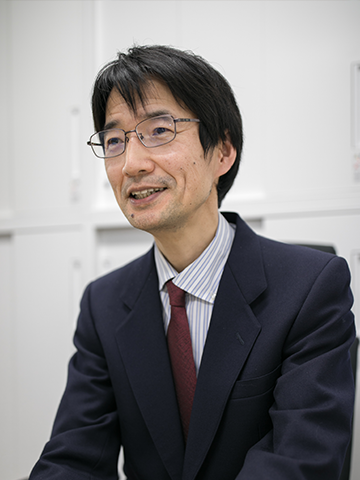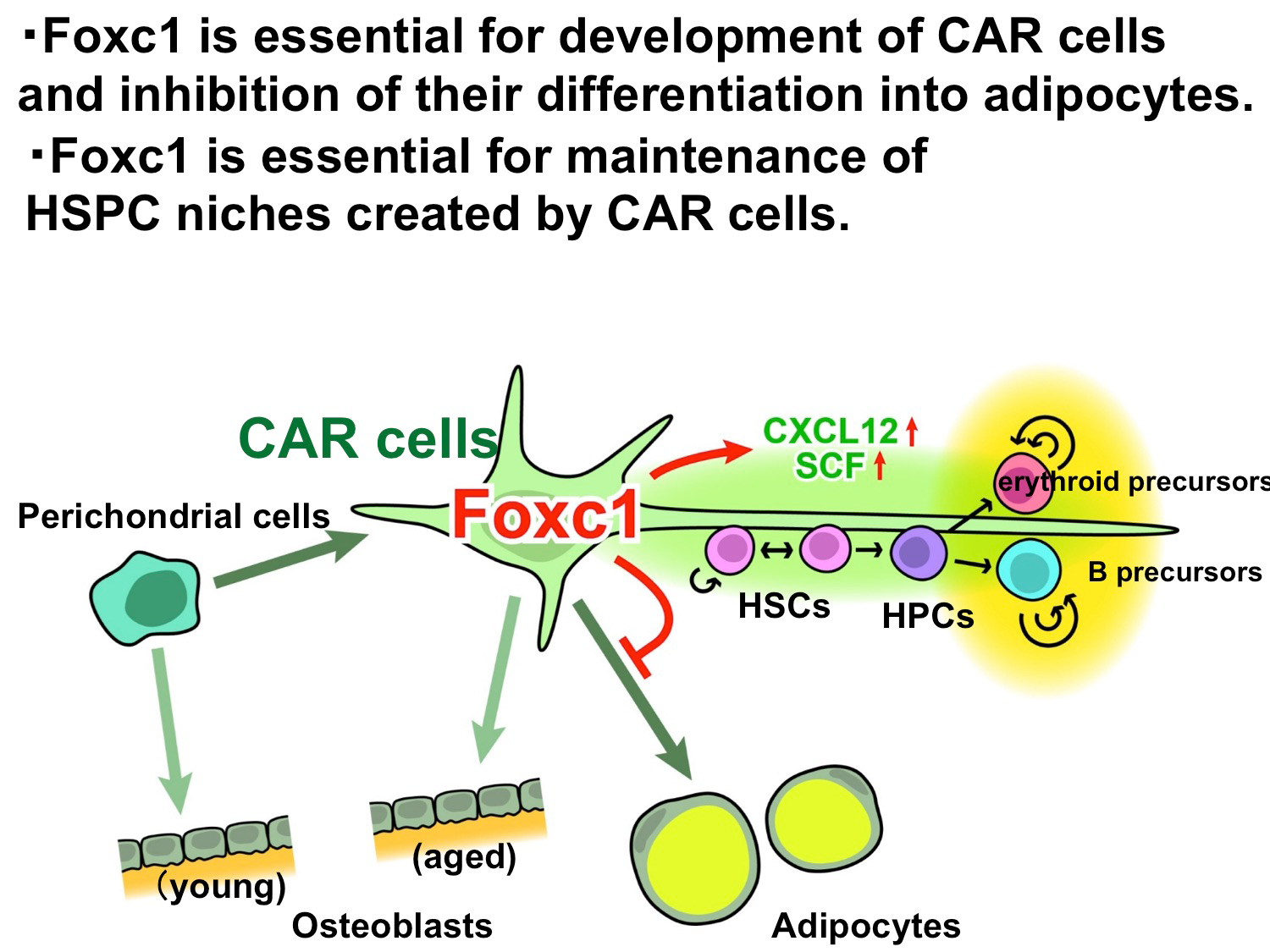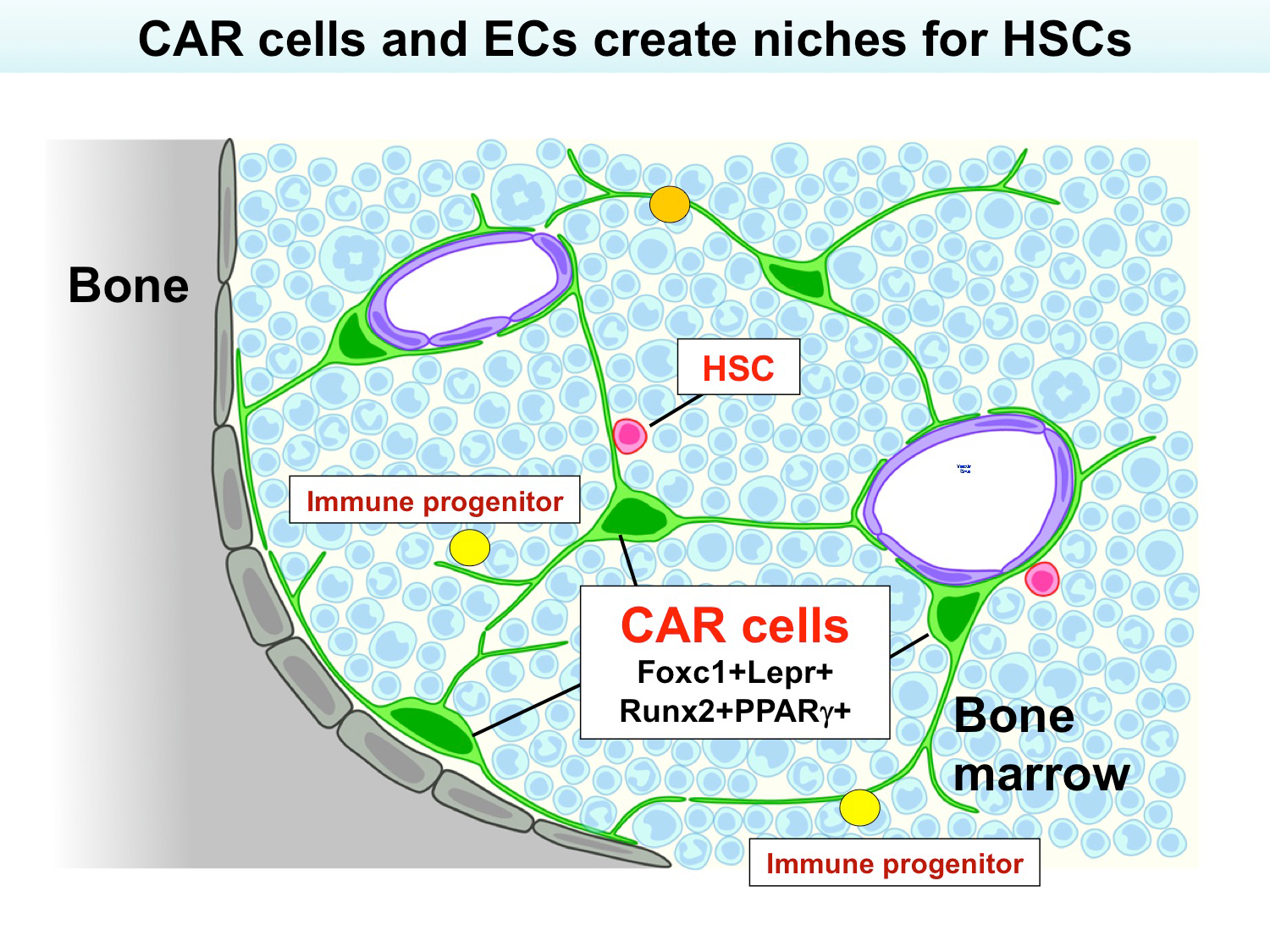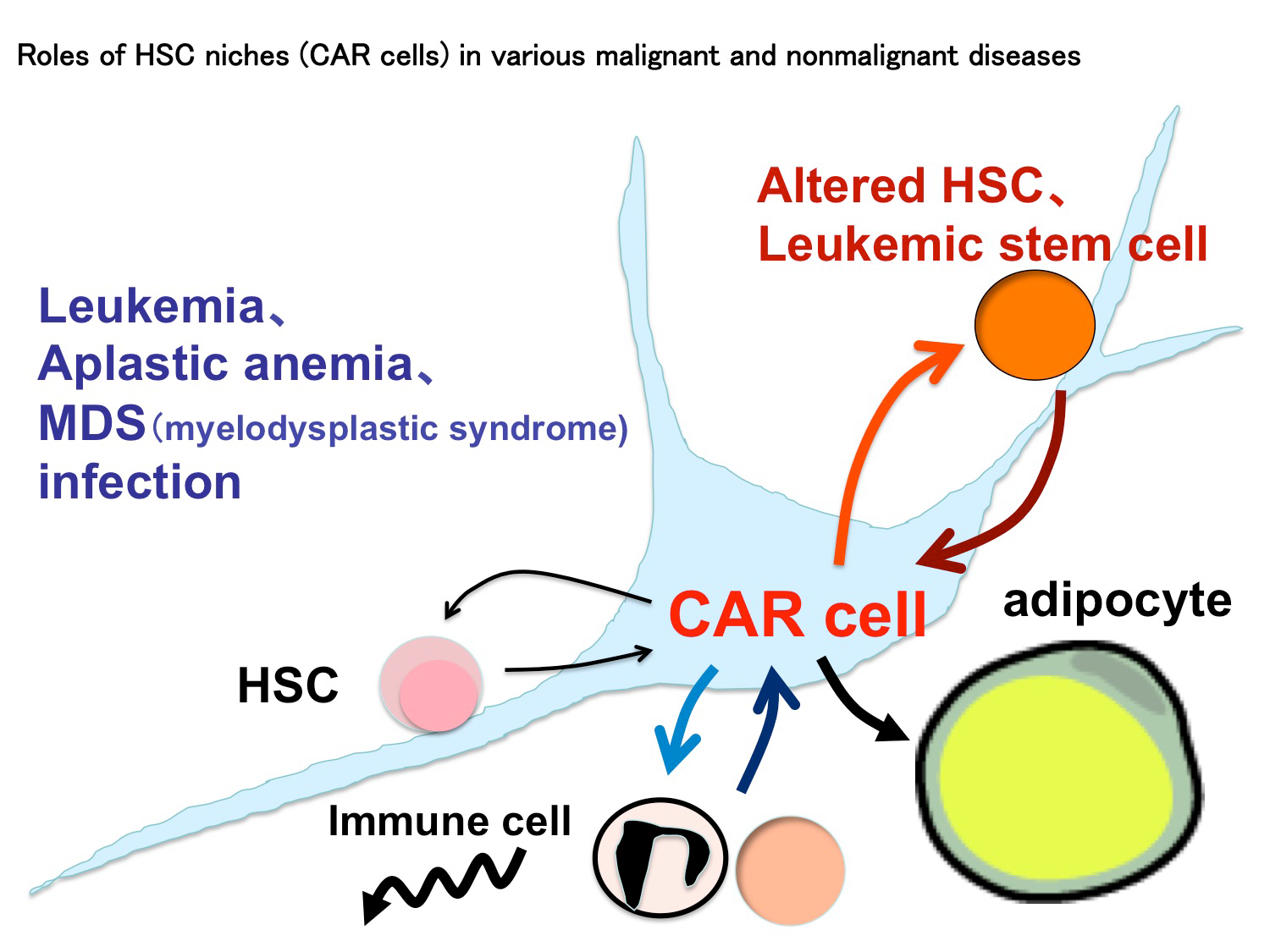Stem Cell Biology and Developmental Immunology
- Mechanism of formation of mesenchymal precursor cells constituting the microenvironment (niche) that maintains stem cells
- How hematopoietic stem cells and immunocompetent cells are maintained and regulated by the niche
- Involvement of the hematopoietic stem cell niche in blood, immunity, bone and metabolic diseases including leukemia

Pioneering research on the microenvironment (niche) that maintains and regulates hematopoietic stem cells, immune cells, and leukemic stem cells
In living tissues, a large number of cells are lost every day, while a small number of tissue resident stem cells are maintained, providing a steady supply of new cells. Tissue resident stem cells have the ability to produce various mature cells of the corresponding tissue (pluripotency) and the ability to replicate themselves over a lifetime (self replication ability). They are responsible for the maintenance of tissues as well as their regeneration following injury or disease.
Tissue resident stem cells are also important cells in the context of cancer as they can accumulate mutations and become the founding cells for tumors. Tissue stem cells are maintained by a localized special microenvironment called the niche, whose cell number and differentiation are tightly regulated. Our group identified tissue stem cells that can produce all types of blood cells and immune cells in the bone marrow, termed CXCL12-abundant reticular cells (CAR cells), which constitute a niche of hematopoietic stem cells (HSCs) [Sugiyama et al., Immunity, 2006; Omatsu et al., 2010, Immunity; Omatsu et al., Nature, 2014]. CAR cells are mesenchymal precursor cells that can differentiate into osteoblasts and adipocytes, and are a treasure trove of functional molecules that regulate hematopoiesis.
Our research deals not only with basic medical questions in the fields of immunology, hematology and stem cell biology, but is also focusing and working on questions regarding clinical medicine, including the establishment and analysis of artificial niches for regenerative medicine, the elucidation of the pathology of hematopoietic tumors and inflammatory diseases, as well as the establishment of niche-based novel therapeutic approaches.
(1) Formation of mesenchymal precursor cells constituting the stem cell niche
The chemokine family cytokine CXCL12 is essential for the maintenance of HSCs and the production of immune cells [Nagasawa et al., Nature, 1996; Tachibana et al., Nature, 1998]. CAR cells have long processes and express high levels of CXCL12 and SCF. We are especially interested in the unique properties of CAR cells and trying to answer how they are formed and how their differentiation is regulated. (see Figure 1) Figure 1
Figure 1
(2) Maintenance and regulation of HSCs and immune cells by their corresponding niches
HSCs home to the bone marrow mediated by CXCL12 during the fetal stage. They are maintained as slow cycling cells and continue to produce blood cells. One question we are particularly interested in is how CAR cells regulate the proliferation and differentiation of HSCs using long cellular processes. We are also interested in the role of the niche regulating the supply of necessary immune cells for biological defense. (see Figure 2) Figure 2
Figure 2
(3) Involvement of the hematopoietic stem cell niche in blood, immunity, bone and metabolic diseases
Bone marrow is the target of various intractable diseases such as leukemia, myelodysplastic syndrome (MDS), aplastic anemia, cancer metastasis and infectious diseases. Because most of the ongoing research has focused on blood cells, we want to analyze the involvement of CAR cells in the pathogenesis of above mentioned diseases and aim for the development of novel promising therapeutic strategies targeting the niche. (see Figure 3) Figure 3
Figure 3








